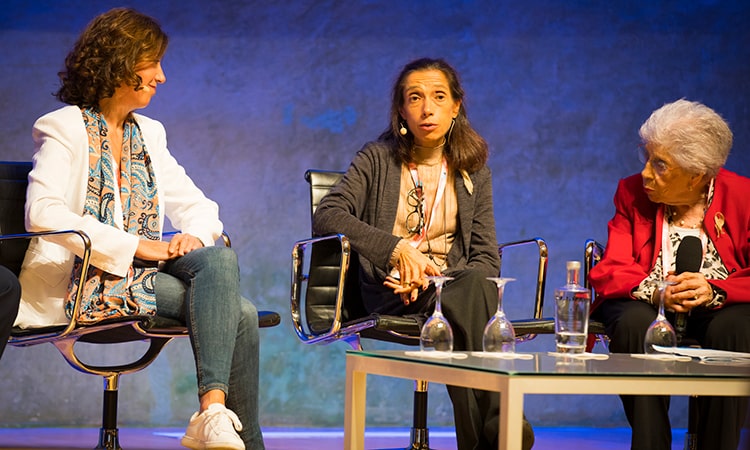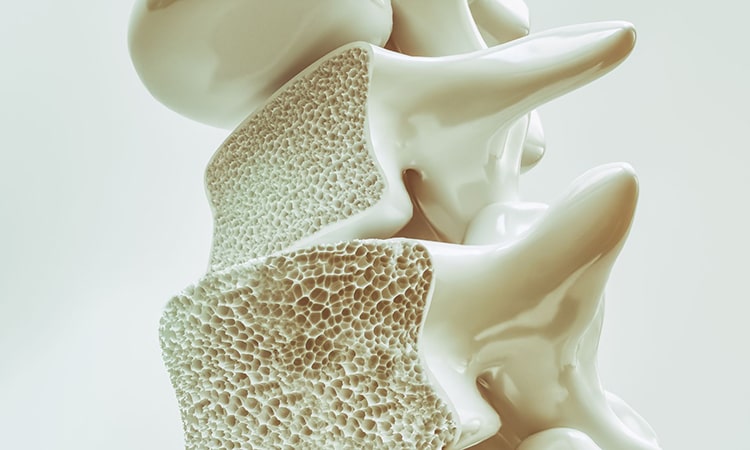- Foundation
- Actions
- Osteoarthritis
- Osteoporosis
- Actuality
- OAFI Radio/TV
- Get Involved
- Contact
-
-
-
OAFI
Osteoarthritis International FoundationC/ Tuset, 19 · 3º 2ª
08006 Barcelona
(+34) 931 594 015
info@oafifoundation.comSchedule:
Monday-Thursday 9AM-6PM
Friday 8AM-3PM
-
-
-

-

-

Gender influences the diagnosis and treatment of rheumatic diseases

Article published in Geriatricarea, the Digital Journal of the Health Sector.
Social determinants, such as gender, have a significant impact on rheumatic diseases. In fact, clinical differences according to sex can delay diagnosis, affect the development of symptoms and modify the response to treatment of rheumatic pathologies, as was explained in a webinar organised by the Spanish Rheumatology Foundation, as part of the activities of the “Observatorio de Igualdad de la SER” (SER Equality Observatory).
In the opinion of the experts who took part in the webinar ‘Gender perspective in rheumatic diseases: a reality’, despite the fact that in recent years progress has been made in the inclusion of gender differentiation criteria in clinical trials and in the review of clinical guidelines with a gender perspective in order to achieve a more equitable and effective medicine, further progress must be made in this area.
And the fact is that, in most diseases, women have a higher prevalence and the difference increases with age, according to data from the Rheumatic and Musculoskeletal Diseases Strategy Evaluation Report, published in 2021, which analyses gender differences in different pathologies such as osteoporosis, osteoarthritis, lumbar and cervical syndromes, fibromyalgia and rheumatoid arthritis. However, despite this higher prevalence, more disability is recognised in men.
Inflammatory and systemic autoimmune diseases also present differences in prevalence according to gender. As Dr. Blanca Hernández, rheumatologist at the Virgen Macarena University Hospital in Seville, points out, “immune-mediated diseases are caused by alterations in the immune system, and genetic differences between men and women play a fundamental role in their development. This is why women have a more reactive immune system and are more prone to diseases of the immune system such as autoimmune thyroid disease, lupus erythematosus, scleroderma…”.
Gender conditions symptoms and treatments
In terms of diagnosis and symptoms, Dr. Javier Rivera, a rheumatologist working in private practice at the National Pain Institute, points out that “the biological difference between men and women undoubtedly determines the presence of symptoms. In women, these tend to be more numerous, more intense, of longer duration and with a greater predisposition to chronification”.

«In this context, pain becomes one of the most relevant symptoms, and various studies have shown differences in sensitivity to pain, in the way it is dealt with and in certain biological markers that vary according to sex”, stresses the expert.«
In the same vein, Dr. Rosario García de Vicuña, rheumatologist at the Hospital Universitario de La Princesa (Madrid), warns that “these gender biases can generate other types of consequences when it comes to establishing the diagnosis, leading to possible delays and making the management of the disease more difficult. We cannot have the same recommendations, the same guidelines and the same book for men and women when it comes to treating these pathologies”.
Lack of treatment studies between men and women
The lack of specific studies on differences in treatment response between men and women also has important consequences. As they say in the Fundación Española de Reumatología, istorically, clinical trials have mostly focused on men, without considering the differences in pharmacokinetics and pharmacodynamics between the sexes.
This is crucial, as body fat distribution, muscle mass and other biological factors can affect the efficacy of treatments. In diseases such as axial spondyloarthritis, a lower response to biologic therapies has been observed in women compared to men.
In addition, there are treatments widely used in diseases such as lupus and vasculitis, such as rituximab, where differences in response have also been identified depending on who receives the drug. In this case, men may have a greater distribution of the drug and a lower therapeutic efficacy in some cases.
This is compounded by the fact that, for years, clinical practice guidelines and therapeutic recommendations have been the same for men and women, without taking into account the fact that diseases can manifest themselves differently depending on the subject. ‘In the field of rheumatology, there is increasing evidence that gender influences not only the clinical presentation of certain pathologies, but also the way in which they are diagnosed and treated,’ says Dr. Javier Rivera.
A clear example of this lack of equity can be observed in the osteoporosis, while its diagnosis and treatment are well established in women, in men it is often detected when serious fractures, such as hip fractures, have already occurred.
‘Fortunately, in recent years progress has been made in the inclusion of gender differentiation criteria in clinical trials and in the review of clinical guidelines with a gender perspective to achieve a more equitable and effective medicine,’ says Dr. Elena Aurrecoechea, rheumatologist at Hospital Sierrallana.
Article published in Geriatricarea, the Digital Journal of the Health Sector.



























